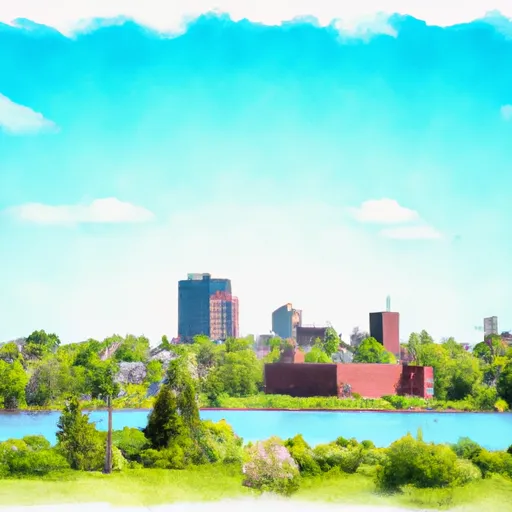-
 Snoflo Premium
Snoflo Premium
Get unlimited access to all our content
With no Ad interruptions! - Start Your Free Trial Login with existing account
Little-Canada
Eden Index
Climate
6.7
•
Recreation
4.9
•
Community
2.5
•
Safeguard
5.0/10

Little-Canada, Minnesota is a charming suburb located in Ramsey County, just northeast of downtown St. Paul. The city experiences a typical Midwestern climate, characterized by warm summers and cold winters. Summers are mild, with average temperatures ranging from the mid-70s to mid-80s Fahrenheit, making it ideal for outdoor activities. Winters are cold, with temperatures averaging in the 20s and frequent snowfall.
Hydrologically, Little-Canada is surrounded by several lakes and ponds, including Gervais Lake, Kohlman Lake, and Lake Gervais. These water bodies provide opportunities for boating, fishing, and other water sports. Additionally, the city is crisscrossed by various creeks and streams, contributing to its picturesque natural landscape.
Outdoor recreation enthusiasts will find numerous opportunities in Little-Canada. The area boasts several parks and green spaces, such as Pioneer Park and Spoon Lake Nature Preserve, offering walking trails, picnic areas, and wildlife observation. For those seeking more active pursuits, the nearby Vadnais-Snail Lake Regional Park provides opportunities for hiking, biking, and cross-country skiing.
Overall, Little-Canada, Minnesota offers a pleasant climate, diverse hydrological features, and ample outdoor recreation options, making it an appealing destination for nature lovers and outdoor enthusiasts.
What is the Eden Index?
The Snoflo Eden Index serves as a comprehensive rating system for regions, evaluating their desirability through a holistic assessment of climate health, outdoor recreation opportunities, and natural disaster risk, acknowledging the profound impact of these factors on livability and well-being.
Climate Health Indicator (CHI): 6.7
Little-Canada receives approximately
823mm of rain per year,
with humidity levels near 83%
and air temperatures averaging around
8°C.
Little-Canada has a plant hardyness factor of
4, meaning
plants and agriculture in this region thrive during a short period during spring and early summer. Most
plants will die off during the colder winter months.
By considering the ideal temperature range, reliable water supplies, clean air, and stable seasonal rain or snowpacks, the Climate Health Indicator (CHI) underscores the significance of a healthy climate as the foundation for quality living.
A healthy climate is paramount for ensuring a high quality of life and livability in a region, fostering both physical well-being and environmental harmony. This can be characterized by ideal temperatures, reliable access to water supplies, clean air, and consistent seasonal rain or snowpacks.
Weather Forecast
Streamflow Conditions
Upper Mississippi-Crow-Rum
Area Rivers
Upper Mississippi-Crow-Rum
Snowpack Depths
Upper Mississippi-Crow-Rum
Reservoir Storage Capacity
Upper Mississippi-Crow-Rum
Groundwater Levels
Recreational Opportunity Index (ROI): 4.9
The Recreational Opportunity Index (ROI) recognizes the value of outdoor recreational options, such as parks, hiking trails, camping sites, and fishing spots, while acknowledging that climate plays a pivotal role in ensuring the comfort and consistency of these experiences.
Access to outdoor recreational opportunities, encompassing activities such as parks, hiking, camping, and fishing, is crucial for overall well-being, and the climate plays a pivotal role in enabling and enhancing these experiences, ensuring that individuals can engage in nature-based activities comfortably and consistently.
Camping Areas
| Campground | Campsites | Reservations | Toilets | Showers | Elevation |
|---|---|---|---|---|---|
| Button Box ? George Washington State Forest | 12 | 1,400 ft | |||
| North Overlook - Red Rock Lake | 55 | 796 ft | |||
| Elk Rock State Park | 75 | 843 ft | |||
| Roberts Creek Park | None | 803 ft | |||
| McCarthy Beach State Park | 90 | 1,393 ft | |||
| Howell Station - Red Rock Lake | 140 | 704 ft | |||
| Ivans - Red Rock Lake | None | 708 ft | |||
| Wallashuck - Red Rock Lake | 80 | 833 ft | |||
| Woodenfrog - Kabetogama State Forest | 60 | 1,126 ft | |||
| Whitebreast - Red Rock Lake | 130 | 828 ft |
Nearby Fishing
Nearby Ski Areas
Catastrophe Safeguard Index (CSI):
The Catastrophe Safeguard Index (CSI) recognizes that natural disaster risk, encompassing floods, fires, hurricanes, and tornadoes, can drastically affect safety and the overall appeal of an area.
The level of natural disaster risk in a region significantly affects safety and the overall livability, with climate change amplifying these risks by potentially increasing the frequency and intensity of events like floods, fires, hurricanes, and tornadoes, thereby posing substantial challenges to community resilience and well-being.
Community Resilience Indicator (CRI): 2.5
The Community Resilience Indicator (CRI) recognizes that education, healthcare, and socioeconomics are crucial to the well-being of a region. The CRI acknowledges the profound impact of these elements on residents' overall quality of life. By evaluating educational resources, healthcare accessibility, and economic inclusivity, the index captures the essential aspects that contribute to a thriving community, fostering resident satisfaction, equity, and social cohesion.

